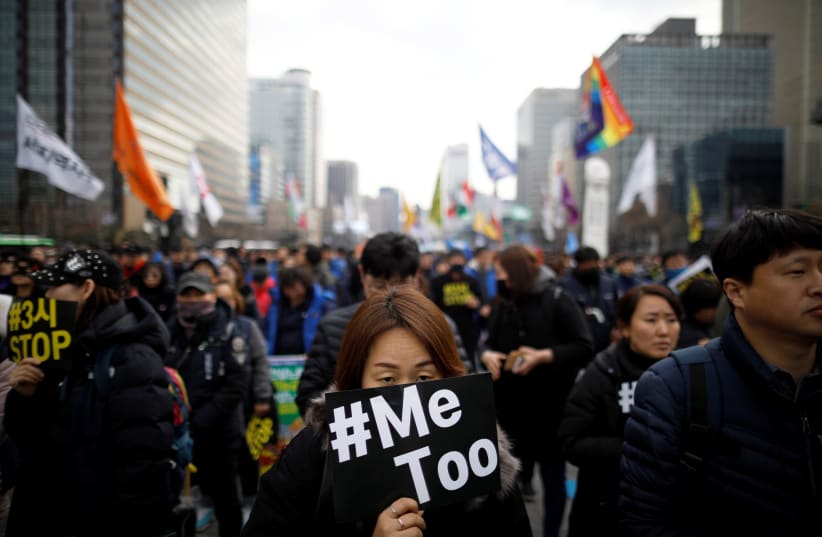Questions of sin, quarantine and repentance are central to this week’s Torah portion, Tazria-Metzora, prompted by the rules surrounding the metzora, a person afflicted with tzaarat. Sometimes translated as “leprosy,” tzaraat is a skin disease that, per the description in this week’s portion, can also affect houses and clothing. After an inspection by a priest, a person who is found to have tzaraat must tear their clothes and leave the camp. They may not return until they are found to be pure by a second inspection, and must cry out “Impure! Impure!” as they walk.
The rabbis suggest that tzaraat, unlike menstruation and other genital emissions, is not simply a random occurrence of the body. Instead they cast it as a punishment. Most famously, the rabbinic tradition associates tzaraat with “lashon hara,” cruel speech, but the Talmud in Arakhin offers seven sins that would cause a person to be afflicted with tzaraat: “For malicious speech, for bloodshed, for an oath taken in vain, for forbidden sexual relations, for arrogance, for theft, and for stinginess.”
Today we know to avoid framing illness or bodily differences as signs of moral degradation; disability activists and fat acceptance activists have pushed against such pernicious and damaging ideas. But the commands given to the metzora can be understood in another way: not as a response to a bodily condition, but as a model for repairing the damage caused by misdeeds.
The debate over how to repair such damage was reignited in recent weeks when it came to light that Jewish studies scholars and community leaders had been participating in closed-door, invitation-only conversations convened by a group that included Steven M. Cohen. Cohen, a prominent Jewish sociologist, was accused of making both verbal and physical advances on junior women colleagues and subsequently resigned from his major academic positions.
Hundreds of Jewish leaders, rabbis and rabbinical students have pushed back against these recent gatherings in public letters, arguing that Cohen had not demonstrated the kind of repentance necessary for such acts of public rehabilitation.
“As Jewish clergy,” reads a letter signed by more than 500 rabbis and cantors, “we know that actively participating in the rehabilitation of unrepentant abusers is not value neutral, and we know that lifting up the work of unrepentant abusers is not value neutral.”
I was involved in drafting a similar letter from rabbinical and cantorial students.
In social media conversations and elsewhere, this has raised conversations about how far might be too far in socially sanctioning those who have committed sexual harassment and assault. Is it really fair to push someone fully “out of the camp”?
When the Talmud in Arakhin goes through its list of sins that cause tzaraat in more depth, the prooftext it offers for sexual misbehavior comes from Genesis. It cites the notorious episode when Pharaoh kidnaps Abraham’s wife, Sarah, and is punished by God with “great afflictions.” The Hebrew word for afflictions is “negaim,” the same word used in Tazria-Metzora to describe the marks of tzaraat.
This is a striking example for the Rabbis to choose. This is not a verse about run-of-the-mill sexual misbehavior, like adultery. This is a reference to a story about sexual violence and power. Pharaoh, who holds all the cards, takes Sarah to his palace simply because he wants to. Some commentators also hold Abraham responsible for standing by and allowing this to happen — he had lied to Pharaoh and claimed that Sarah was his sister rather than his wife in hopes that Pharaoh would not harm him when taking her away. While many commentators excuse Abraham’s lie, the medieval commentator Nachmanides is critical of Abraham’s decision to expose his wife to sexual sin.
By invoking this story in the context of tzaraat, the Rabbis offer us an opportunity to understand the biblical processes for responding to tzaraat as a mode for responding to sexual violence. Banishing someone “outside the camp” is a key part of a community’s response to such behavior. Time away, time outside, is necessary. And it is the responsibility of the culpable party to keep others safe, to prioritize their needs over his or hers. The person with tzaraat is commanded to caution others away, to warn passersby of their state.
In a dvar Torah about the moral lessons we can each learn from these parshiot, Dr. Rachel Rosenthal, a Talmud professor, writes: “Often, it is difficult to acknowledge our own weaknesses and failings. We excuse behaviors in ourselves that we condemn in others, justifying our actions even as we are uncomfortably aware that we do not really believe we are doing the right thing. Imagine if, every time we wronged ourselves and others, we were forced to stand up and admit it.”
Rosenthal challenges us to embrace the mode of the metzora, to see the value in making public our wrongs. Rosenthal’s words are directed at individuals: We must all own our misdeeds and take time to contemplate them. But her words also offer wisdom as we as a community consider what is moral and right: “Rather than hiding behind excuses, we would be forced to stand before the world and say, Look, this is who I am, both for good and for bad. And while this might cause us to be temporarily separated from our communities, ultimately it would have the potential to bring us back in, presenting a more honest and more righteous version of ourselves, scars and all.”
Time outside the camp and public communication about misdeeds are key parts of healing, both for individuals and a community. The case of the metzora teaches that for someone not to be welcomed in communal spaces after they do harm is necessary and important. Without it, there can be no moving forward.The views and opinions expressed in this article are those of the author and do not necessarily reflect the views of JTA or its parent company, 70 Faces Media.
